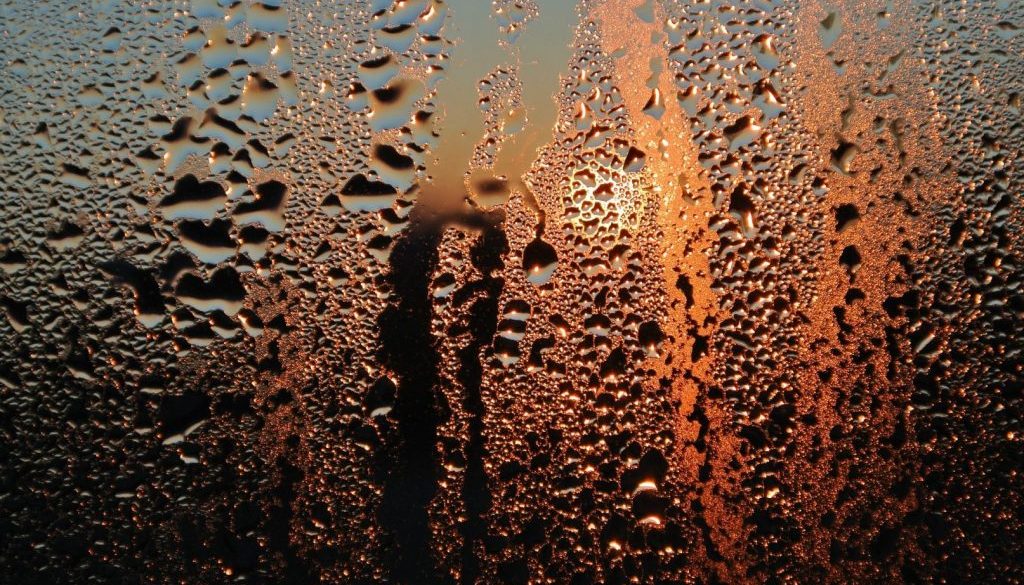As Temperatures Plummet, Should I be Worried About Condensation?
Condensation is a prevalent issue that many building proprietors and occupants come across. It arises when moisture in the air encounters a cold surface, resulting in the development of water droplets. Although condensation may seem innocuous, it can have substantial implications for a building’s structural integrity and indoor air quality. In this blog post, we will delve into the causes of condensation, why customers should be apprehensive about it, and potential remedies to alleviate its effects.
Causes of Condensation
Temperature Discrepancy:
One of the principal causes of condensation is a noteworthy difference in temperature between the interior and exterior of a building. During cold weather, the external surfaces of a building, such as windows, walls, and roofs, have a tendency to be colder than the warm, humid air inside. When warm, moist air makes contact with these cold surfaces, condensation takes place.
Elevated Humidity Levels:
Augmented humidity levels within a building can contribute to condensation predicaments. Moisture is introduced through various means, including cooking, bathing, and even respiration. When indoor air becomes saturated with moisture, any interaction with a cold surface can lead to condensation.
Inadequate Ventilation:
Adequate ventilation is imperative for the regulation of indoor humidity levels and the reduction of condensation. Insufficient ventilation traps moist air inside a building, making it more probable that condensation will occur. Spaces with poor ventilation, such as bathrooms and kitchens, are especially susceptible.
Why Customers Should Be Anxious About Condensation
Condensation may manifest as inconsequential water droplets on windows or as damp patches on walls, but it can give rise to an array of complications that customers should be concerned about:
Structural Impairment:
Prolonged exposure to condensation can jeopardise a building’s structural soundness. Water that gathers on surfaces can infiltrate walls and ceilings, culminating in decay, corrosion, and other forms of structural damage.
Mould and Mildew Growth:
Where there is moisture, there is the potential for the proliferation of mould and mildew. These fungi not only engender unsightly blemishes and odours but can also pose health hazards to occupants. Mould spores can exacerbate allergies and respiratory issues.
Diminished Indoor Air Quality:
Condensation can contribute to subpar indoor air quality. It engenders an environment conducive to mould and dust mites, and the resultant mould spores can become airborne, further compromising air quality.
Aesthetic Complications:
Water stains on walls and ceilings or misted windows can detract from a building’s aesthetics and decrease its value. Customers are rightfully concerned about preserving the aesthetics of their properties.
Energy Inefficiency:
Condensation can impinge on a building’s energy efficiency. When windows are consistently covered in moisture, it becomes difficult to maintain a comfortable temperature indoors. Customers may find themselves elevating the heating to combat the cold, which increases energy costs.
Implications for Insurance and Warranties:
Building damage stemming from condensation may not be covered by insurance or warranties if it is deemed a maintenance issue. This can lead to substantial financial burdens for customers.
Solutions to Mitigate Condensation
Customers can take several measures to address and alleviate condensation issues in their buildings:
Enhance Insulation:
Augmenting insulation in walls, roofs, and windows can diminish temperature disparities and minimise the potential for condensation.
Amplify Ventilation:
Sufficient ventilation, especially in areas prone to moisture, such as bathrooms and kitchens, can assist in regulating indoor humidity levels. Adequate ventilation systems, like exhaust fans and air exchangers, can be installed.
Utilise Dehumidifiers:
Dehumidifiers can be efficacious in eliminating excess moisture from the air. They are particularly useful in areas with consistently high humidity levels.
Rectify Leaks and Seal Gaps:
Address any leaks in the building envelope and seal gaps and fissures to prevent moisture infiltration from the outside.
Sustain Consistent Indoor Temperatures:
Maintaining consistent indoor temperatures can reduce the probability of condensation. Programmable thermostats can facilitate this.
Incorporate Low-E Windows:
Low-emissivity (Low-E) windows are designed to diminish heat transfer and can aid in maintaining more consistent temperatures on the interior glass surface, consequently reducing condensation.
Regular Inspections:
Routine building inspections, particularly by a professional building surveyor, can help identify condensation issues before they escalate and prompt intervention can avert expensive repairs. To speak to a member of our team click here.
In summary, condensation is a matter that building owners and occupants should take earnestly. It can culminate in structural damage, mould growth, diminished indoor air quality, and higher energy expenditures. Nonetheless, with appropriate insulation, ventilation, and upkeep, condensation issues can be mitigated, ensuring a comfortable indoor environment. It is imperative for customers to be cognizant of the causes and repercussions of condensation and to take proactive steps to address this matter in their buildings.




